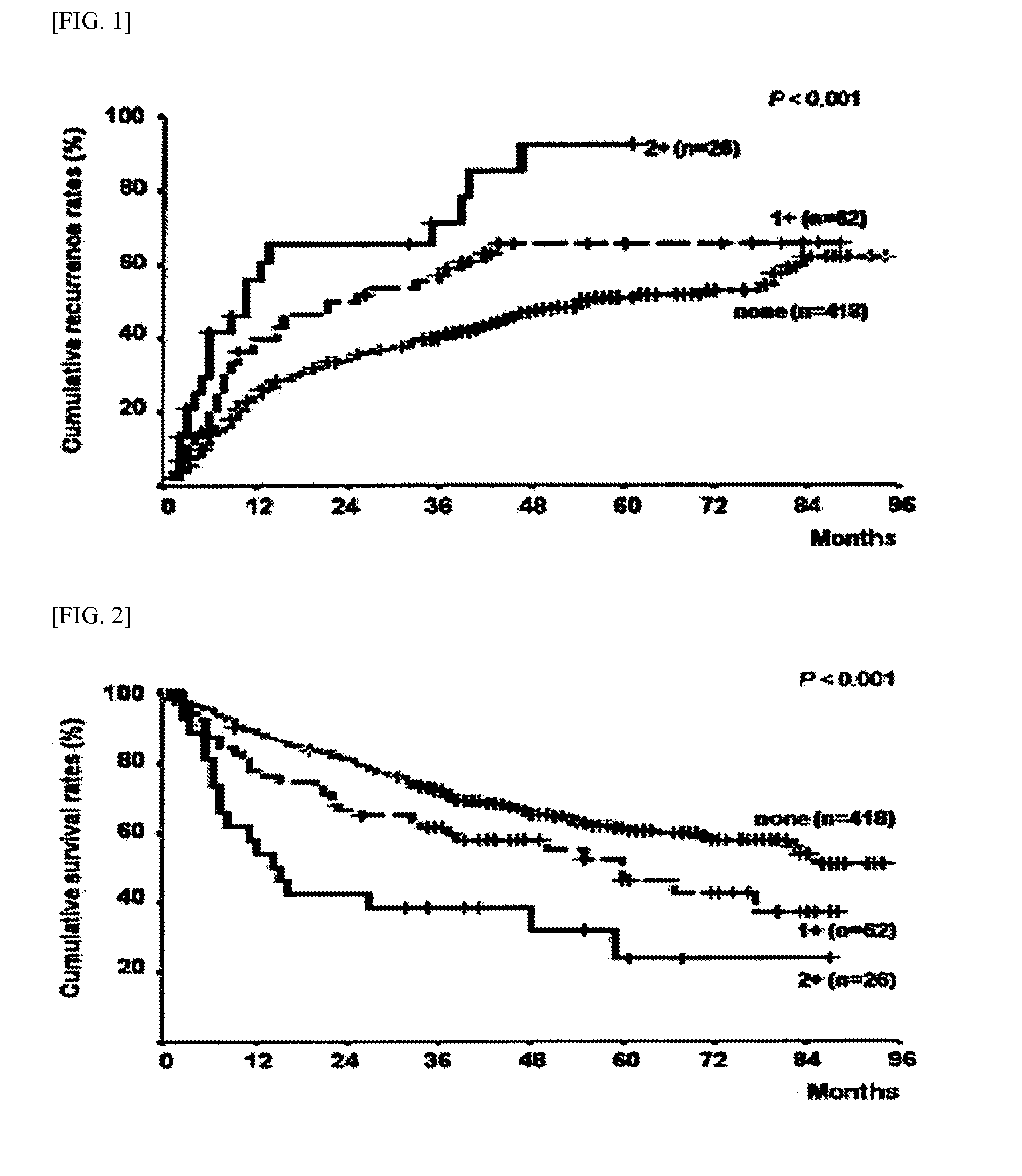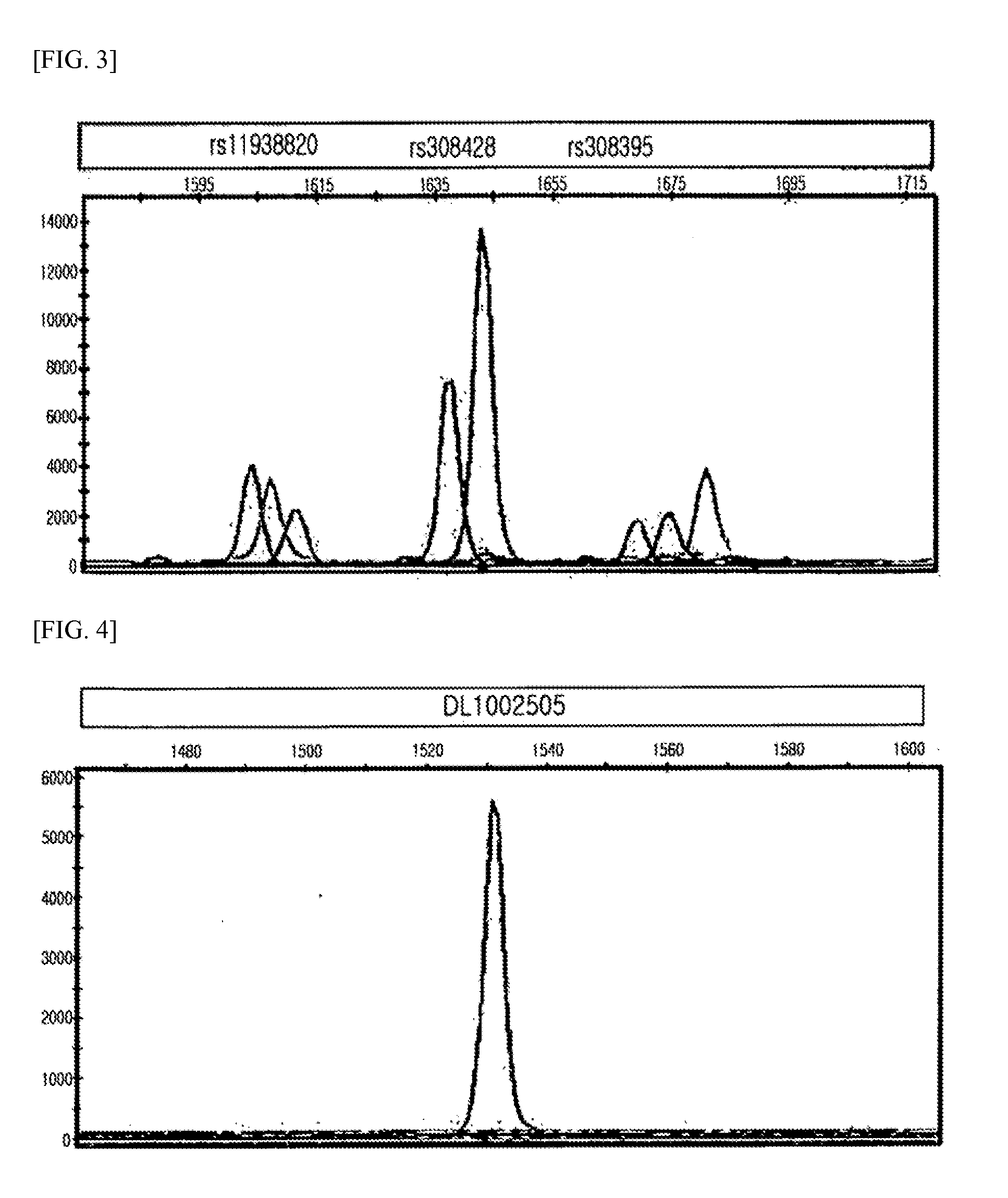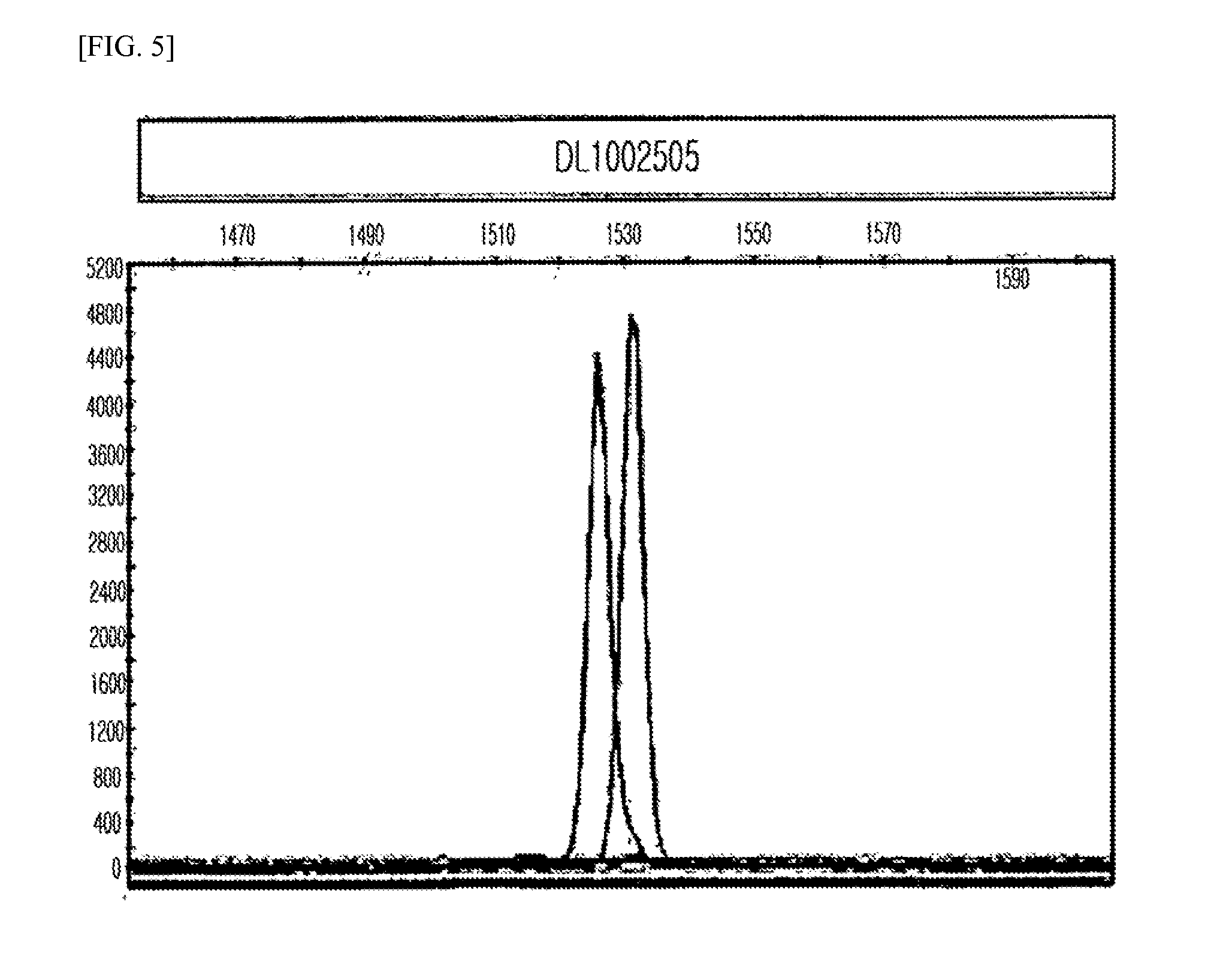Single nucleotide polymorphism for predicting prognosis of hepatocellular carcinoma
a single nucleotide polymorphism and prognosis technology, applied in the field of single nucleotide polymorphism for predicting can solve the problems of frequent postoperative recurrence, high relapse rate, and 10% to 20% of patients with hepatocellular carcinoma can be operated, so as to improve the prognosis of hepatocellular carcinoma
- Summary
- Abstract
- Description
- Claims
- Application Information
AI Technical Summary
Benefits of technology
Problems solved by technology
Method used
Image
Examples
example 2
SNP Genotype Analysis
[0053]1. SNP Genotype Analysis
[0054]A primer set that can amplify the region including SNP of Example 1 and TaqMan probe including SNP region were manufactured by using primer express software. As the TaqMan probe, each of the probes that are suitable for wide type and mutant alleles was manufactured according to the sequence of SNP.
[0055]A probe was manufactured by tacking a fluorescent dye on one side of the TaqMan probe and tacking a quencher that can inhibit the color of the fluorescent dye on the other side. In this case, separate fluorescent dyes having different colors were tacked to the wild type and mutant alleles, respectively.
[0056]Three types of primers disclosed in the following Table 1 were mixed together, and then PCR reaction was performed by using the mixed primers to distinguish the mismatch of a pair of single nucleotide according to active property of exonuclesase of Taq polymerase.
TABLE 1rs No.StrandPrimer Sequencers1048201ForwardForwardATGA...
example 3
Patient Characteristic
[0061]The experiment was performed for 506 patients suffered from recurrence of hepatocellular carcinoma in Asan Hospital from 1998 to 2003. Clinical characteristics of 506 patients are shown in the following Table 2. The follow-up survey of the patients was performed for an average period of 43 months (1 to 96 months) after curative surgical resection.
TABLE 2Value ofItemsCharacteristicAge (Year, Mean ± SD)56 ± 10Sex (M:F)412:94 Disease degree (CH:LC)138:368Evaluation of Liver Function (Child-Pugh class, A / B / C)383 / 73 / 50HCC Cause (HBV / HCV / Both / NBNC)397 / 29 / 8 / 72HCC Size (cm)4 (0.7-21)Follow-up Survey Period After Hepatectomy (Month)43 (1-96)
[0062]The recurrence of liver cancer and survival were determined by using a medical record at the last day of follow-up survey. In the case of the patients that were not followed up for 3 months, it was evaluated by visiting near residences of the patients.
example 4
MTA1 Immunohistochemical Staining Evaluation
[0063]1. MTA1 Immunohistochemical Staining in Human Hepatocellular Carcinoma Tissue
[0064]MTA1 immunochemical staining to hepatocellular carcinoma tissue was performed by using an avidin biotin peroxidase complex method and a color reaction was determined with 3,3′-diaminobenzidin and LSAB kit (DAKO, Carpentaria, Calif., USA).
[0065]A paraffin-embedded micro-dissected specimen of tissue harvested from hepatocellular carcinoma and a non-neoplastic region around hepatocellular carcinoma was treated with xylene to remove paraffin and re-hydrated with alcohols with gradual concentrations. The slice of liver tissue prepared was treated with 3% hydrogen peroxide for 10 minutes to block activity of endogenous peroxidase.
[0066]In order to amplify the reaction upon an immunochemical staining, antigen retrieval was performed by using a buffer solution of citric acid (pH 6.0) for 10 minutes in a steam oven. A primary antigen (Santa Cruz Biochemistry, S...
PUM
| Property | Measurement | Unit |
|---|---|---|
| Temperature | aaaaa | aaaaa |
| Temperature | aaaaa | aaaaa |
| Temperature | aaaaa | aaaaa |
Abstract
Description
Claims
Application Information
 Login to View More
Login to View More - R&D
- Intellectual Property
- Life Sciences
- Materials
- Tech Scout
- Unparalleled Data Quality
- Higher Quality Content
- 60% Fewer Hallucinations
Browse by: Latest US Patents, China's latest patents, Technical Efficacy Thesaurus, Application Domain, Technology Topic, Popular Technical Reports.
© 2025 PatSnap. All rights reserved.Legal|Privacy policy|Modern Slavery Act Transparency Statement|Sitemap|About US| Contact US: help@patsnap.com



